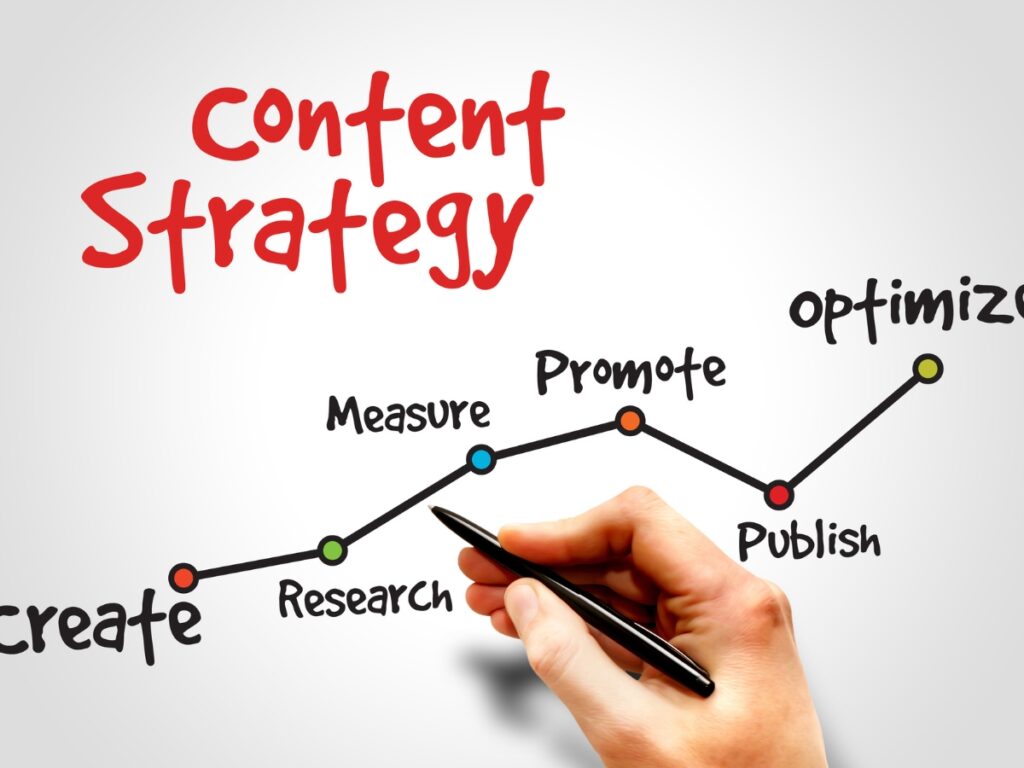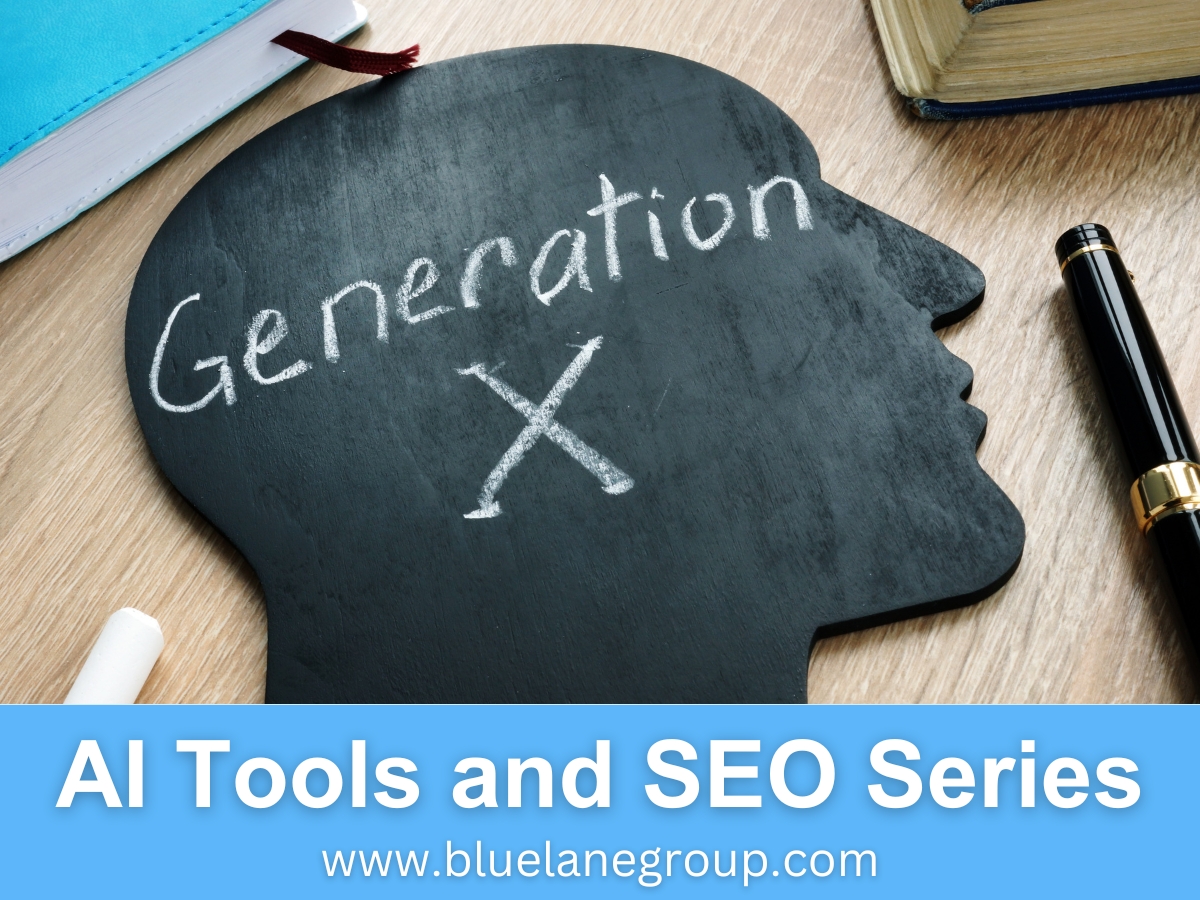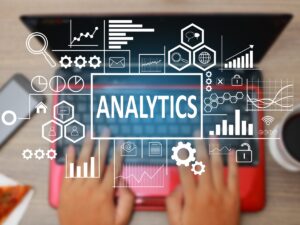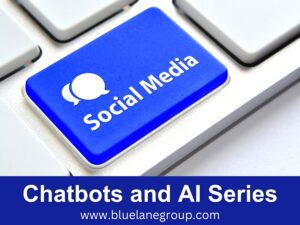Introduction: The Revolution of AI-Driven Content Generation
This comprehensive article focuses on AI-driven content generation, an innovative technology that can profoundly impact how you approach content creation and strategy. We will discuss its key capabilities, potential benefits, and transformative effect on modern content marketing.
Quick Rundown – If Time’s Not on Your Side
- AI-driven content generation is not merely an automated way to churn out articles; it’s a robust tool that can enhance creativity, improve efficiency, and provide personalized content at scale. Utilizing machine learning and advanced algorithms, this technology can generate content that resonates with your target audience, boosting engagement and conversions.
- If you want to revolutionize how you produce content, embracing AI-driven methods could be your answer. Incorporating AI-driven content generation into your strategy streamlines content creation and adds sophistication and personalization that manual processes struggle to achieve. By leveraging this technology, you’re positioning your brand for success in an ever-evolving digital landscape.
Welcome to the seventh article in the Blue Lane Group series on AI Tools and SEO: Building Tomorrow’s Search Strategies Today. This series examines how artificial intelligence is reshaping the field of search engine optimization, offering tools and strategies to boost website rankings, improve user engagement, and make content more relevant.

Disclosure: The digital products mentioned in this article are highly regarded in the marketplace and are endorsed by the Blue Lane Group staff. We may earn a commission at no additional cost if you purchase through the provided links.
Table of Contents

The Increasing Need for Content Generation
As digital landscapes evolve, the demand for high-quality content has never increased. Businesses find it increasingly challenging to keep up with the constant need for fresh, engaging material.
This is where automated solutions like GPT-3 by OpenAI and MarketMuse are becoming invaluable. These AI-driven content generation tools enable organizations to create various content types efficiently, freeing human resources for more strategic tasks.
With Zapier, you can even automate the distribution of this AI-generated content, making the entire content strategy more streamlined.
Traditional Content Creation vs. AI-Driven Content Generation
Traditional content creation relies heavily on human intelligence and creativity but can be slow and resource-intensive. On the other hand, AI-driven content generation tools like Copy.ai and Frase offer quick, automated solutions for crafting high-quality text.
While tools, like Grammarly can assist traditional content creation by providing real-time grammar and style checks, platforms like Jasper (now Jarvis.ai) are designed to generate long-form content with minimal human input.
Using both traditional and AI-driven methods can optimize your content strategy, but there’s no denying AI’s increasing utility in content generation.
What Makes AI-Driven Content Generation Unique
Its ability to produce content at scale while maintaining a certain quality level sets AI-driven content generation apart. Tools like ShortlyAI and ContentBot can generate long-form content based on prompts and questions, making the process much more efficient.
Another unique feature is the real-time SEO optimization offered by tools like Clearscope and SurferSEO, which integrate AI algorithms to improve your content’s visibility on search engines.
Additionally, AI-driven tools can analyze and adapt to current trends, which BuzzSumo excels at by helping you understand what content is performing best in your niche. This makes AI-driven content generation fast, highly relevant, and tailored.

How AI-Driven Content Generation Works
AI-driven content generation functions by leveraging machine learning algorithms to understand the context and semantics of the text. Tools like GPT-3 by OpenAI utilize complex language models to generate content that can often be indistinguishable from that written by humans.
These tools generally work by taking a prompt or a set of keywords and expanding upon them to create full-fledged articles, social media posts, or other types of content. Platforms like Frase generate content and assist in content research and SEO optimization.
With the help of automation platforms like Zapier, you can effortlessly distribute this AI-generated content across different channels.
The Algorithms Behind AI-Driven Content Generation
Understanding the algorithms behind AI-driven content generation can give us valuable insights into its capabilities and limitations. GPT-3 by OpenAI is based on a transformer architecture, which enables it to produce coherent and contextually relevant content.
Other tools like MarketMuse employ natural language processing (NLP) algorithms to analyze top-performing content and recommend improvement. Even SEO-focused agencies like SurferSEO utilize AI algorithms to provide real-time advice for optimizing content, ensuring it ranks well in search engines.

Key Features in AI-Driven Content Generation Tools
Several key features set AI-driven content generation tools apart from traditional methods. First, producing bulk content at scale is a significant advantage; tools like ContentBot and ShortlyAI excel.
Secondly, many agencies offer real-time language and style checks; Grammarly is a prime example. Another critical feature is SEO optimization, which means that Clearscope offers by analyzing keywords and suggesting improvements.
Platforms like Jasper (now Jarvis.ai) even provide specialized templates for different types of content, from blog posts to ad copy, making the generation process even more tailored and efficient.
Real-Time Language Modeling in AI-Driven Content
Real-time language modeling is one of the most fascinating aspects of AI-driven content generation. It allows for immediate, on-the-fly generation of text, which can be particularly useful for chatbots and real-time interactions. GPT-3 by OpenAI has excelled in this domain, offering coherent and contextually appropriate content within milliseconds.
Tools like Wordtune offer real-time suggestions for improving sentence structure and word choice, thus enhancing readability and effectiveness. While not strictly a content generation tool, even Grammarly utilizes real-time language modeling to provide immediate grammar and style checks, complementing the AI-driven content generation process.
Scalability in AI-Driven Content Generation
One of the most compelling advantages of AI-driven content generation is its scalability. Traditional content creation methods often struggle to keep up with the increasing volume demands. Still, AI-driven tools like ContentBot and ShortlyAI can quickly generate large quantities of content.
GPT-3 by OpenAI can also produce content at scale, whether blog posts, social media updates, or technical documents. With tools like Zapier, you can even automate the distribution of this content, further enhancing scalability.
All in all, leveraging AI for content creation allows businesses to generate more content without sacrificing quality, ultimately improving their content strategy.

Case Studies: Success Stories in AI-Driven Content Generation
Many businesses have already reaped the benefits of integrating AI into their content strategies. Companies using MarketMuse have reported improvements in their content’s SEO performance thanks to AI-generated optimization recommendations.
Another success story involves Frase, which has helped businesses automate the labor-intensive parts of content creation, such as research and initial drafting.
Tools like SurferSEO have also seen positive outcomes, where enterprises have successfully improved their search rankings using real-time, AI-driven content optimization. These case studies underscore the efficacy and potential of AI-driven content generation.
Streamlining Content Strategy Through AI
Adopting AI-driven content generation tools can significantly streamline your content strategy. For example, Copy.ai can automate the generation of marketing copy, while Clearscope can analyze what terms need to be included for better SEO.
Moreover, BuzzSumo allows you to identify what types of content are currently trending, helping you decide what AI-generated content will be most impactful. Combining these tools allows you to automate your content strategy’s creation plan, inning, and optimization stages, resulting in a more streamlined and practical approach.
Elevating Brand Voice with AI-Driven Content
Believe it or not, AI-driven content generation can also help maintain and elevate a brand’s voice. Tools like Jasper (now Jarvis.ai) offer customization options that allow the generated content to align with a specific tone or style. Even Grammarly offers tone detection features that ensure your content is error-free and consistent with your brand’s voice.
Furthermore, Wordtune helps in real-time by suggesting improvements to make your content more compelling and aligned with your desired tone. Therefore, AI-driven content doesn’t have to be generic; it can be tailored to reflect and even enhance your brand’s unique voice.

Challenges in Implementing AI-Driven Content Generation
While AI-driven content generation offers numerous advantages, there are also challenges. One of the primary concerns is the quality of the generated content. While advanced models like GPT-3 by OpenAI can produce high-quality text, it may still require human oversight for fine-tuning.
Tools like Grammarly can help but aren’t a complete solution. Another challenge is integrating various agencies; while Zapier can automate specific processes, the initial setup can be complex.
Lastly, there’s the cost factor; premium features in tools like MarketMuse and Frase can be expensive, making it challenging for small businesses to adopt these technologies fully.
Data Privacy Concerns in AI-Driven Content
Data privacy is a critical issue that businesses must consider when implementing AI-driven content generation tools. The algorithms behind tools like GPT-3 by OpenAI and Copy.ai often require large datasets for training, raising concerns about data misuse or unauthorized access.
Companies must comply with data protection regulations like GDPR when utilizing these AI technologies. While AI tools are generally designed to be secure, the onus is on businesses to use them responsibly and ensure that sensitive data is adequately protected.
Ethical Considerations in AI-Driven Content Generation
The use of AI in content generation also raises some ethical questions. For instance, if a piece of content is entirely generated by an AI tool like Jasper (now Jarvis.ai), who owns the rights to that content?
There’s also the issue of authenticity; using AI to generate reviews or testimonials without disclosure could be considered deceptive. Tools like BuzzSumo can help identify what type of content resonates with your audience, but creating misleading content could damage your brand’s reputation and credibility.
As such, businesses must navigate the ethical landscape carefully when employing AI-driven content generation techniques.

Future Trends in AI-Driven Content Generation
The future of AI-driven content generation looks promising, with constant advancements in machine learning algorithms and natural language processing. Real-time language modeling, as seen in GPT-3 by OpenAI, will likely become even more sophisticated, offering more nuanced and context-aware content generation.
Additionally, we can expect better integration among various AI tools. For instance, Clearscope could integrate its SEO recommendations directly into content generated by ContentBot or ShortlyAI, offering a seamless experience from content creation to optimization.
As AI technologies evolve, they will play an increasingly integral role in shaping content strategies across industries.
How to Choose the Right Tools for AI-Driven Content Generation
Choosing the right tools for AI-driven content generation involves several considerations. First, identify your needs: Are you looking for a tool to assist with long-form content like blogs or shorter snippets like social media posts?
Tools like Jasper (now Jarvis.ai) are more suited for long-form content, while Copy.ai excels in shorter formats. Budget is another factor; while Grammarly offers a free version with essential features, more advanced platforms like MarketMuse come at a premium.
Consider also the level of customization and control you require. Some tools, like ShortlyAI, offer a more hands-on approach, while others, such as GPT-3 by OpenAI, can handle most tasks autonomously.
Finally, don’t overlook ease of integration; a tool easily connected to your existing workflow through Zapier can save you much time and effort.

FAQ: Your Top Questions on AI-Driven Content Generation Answered
Many people have questions about AI-driven content generation, and tools like Frase and Clearscope can help answer some of them by offering in-depth analytics and insights.
Some common questions include: “How does the quality of AI-generated content compare to human-created content?” While AI tools like GPT-3 by OpenAI have become incredibly advanced, human oversight is often still required for the best results. “Is AI-generated content SEO-friendly?”
Tools like SurferSEO are designed to optimize AI-generated content for search engines. “What about data privacy?” When using any AI-driven platform, ensure you’re compliant with data privacy regulations like GDPR, especially when using tools that store or analyze large datasets
What is the Role of AI in Content Generation?
The role of AI in content generation is becoming increasingly pivotal. AI-driven tools like ContentBot and ShortlyAI can efficiently produce large volumes of content, allowing businesses to meet the ever-growing demand for fresh, engaging material.
Real-time language modeling technologies like GPT-3 by OpenAI have pushed the boundaries of what’s possible, offering coherent and contextually relevant content at an unprecedented scale.
Platforms like MarketMuse even take it a step further by providing data-driven recommendations for content optimization, all facilitated by AI.
How Does AI Enrich Traditional Content Creation?
AI doesn’t necessarily have to replace traditional content creation methods but can supplement the overall process. For example, Grammarly can assist content creators by offering real-time grammar and style checks, while BuzzSumo can provide valuable insights into what type of content is trending.
Clearscope can analyze top-performing content in your niche, offering keywords and topics to make your content more SEO-friendly. Thus, integrating AI tools into traditional content creation processes can provide a holistic approach where AI-driven data and automation enhance human creativity.
Is Data Privacy a Concern with AI-Driven Content Generation?
Data privacy is indeed a crucial concern when it comes to AI-driven content generation. The algorithms powering these tools often require access to large datasets for training and operation. This raises questions about how this data is stored, who can access it, and how securely it’s protected.
Organizations using AI-driven content generation tools must comply with data protection and privacy regulations, such as Europe’s General Data Protection Regulation (GDPR). Due diligence is necessary to review the AI platforms’ data privacy policies to ensure they meet the required legal and ethical standards.

Conclusion: The Expanding Horizon of AI-Driven Content
The landscape of content creation is undergoing a seismic shift with the advent of AI-driven content generation. From scalability and efficiency to customization and even ethical considerations, AI adds new dimensions to how we think about and create content.
While it may not replace human creativity, it significantly enhances it by offering data-driven insights, automating repetitive tasks, and providing new ways to engage audiences. However, this technology has challenges and concerns, such as data privacy and ethical dilemmas, which must be carefully navigated.
As AI continues to evolve, it promises to offer even more transformative changes to the content landscape, making it an exciting field to watch and participate in.
You Might Also Like:
If you enjoyed this article and received value from it, check out the other Blue Lane Group articles in the AI Tools and SEO: Building Tomorrow’s Search Strategies Today series:
- Uncover Hidden Opportunities: AI in User Behavior Analytics Tools
- Elevate Your Strategy: The Importance of SEO Optimization
- The Role of AI in SERP Analysis: A Revolutionary Approach
- Transform User Experience: Content Personalization with AI
- Boost Your Site’s Performance: AI in Technical SEO Audits
- Outsmart Your Rivals: AI in Competitive SEO Analysis
- Transform Your Content Strategy: AI-Driven Content Generation Revealed
- AI Link Building: The Secret to Unbeatable SEO
- Breakthrough Technology: Using AI for Image and Video SEO
- Drive More Traffic: Leveraging AI SEO Mobile Strategy
- Drive Engagement: How Sentiment AI Analysis for SEO Works
- Maximize ROI: Using an AI-Driven SEO Dashboard and Reporting Effectively
- Thrive Locally: AI Local SEO Tools You Can’t Ignore
- Ignite Sales: Utilizing AI for PPC Campaigns Strategies
- Amplify Your Reach: The Best Influencer Tools Powered by AI
- Elevate Rankings: AI in Social Media and SEO Strategies
- Optimize Success: Understanding AI Semantic Search for SEO
- Unleash the Power: AI and SEO Strategies Using Machine Learning
- Optimize Conversions: AI and Search Intent Tactics





